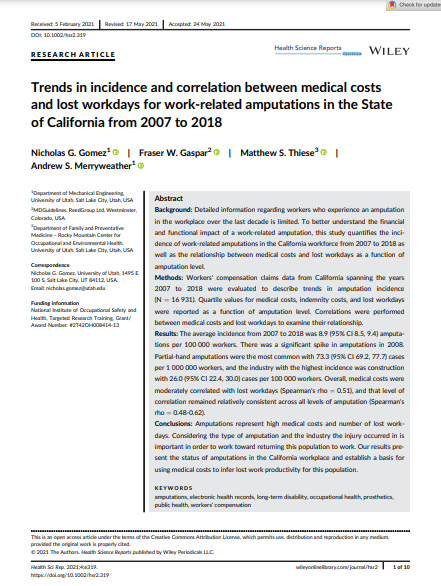Background: Detailed information regarding workers who experience an amputation in the workplace over the last decade is limited. To better understand the financial and functional impact of a work-related amputation, this study quantifies the incidence of work-related amputations in the California workforce from 2007 to 2018 as well as the relationship between medical costs and lost workdays as a function of amputation level.
Methods: Workers’ compensation claims data from California spanning the years 2007 to 2018 were evaluated to describe trends in amputation incidence
(N = 16 931). Quartile values for medical costs, indemnity costs, and lost workdays were reported as a function of amputation level. Correlations were performed between medical costs and lost workdays to examine their relationship.
Results: The average incidence from 2007 to 2018 was 8.9 (95% CI 8.5, 9.4) amputations per 100 000 workers. There was a significant spike in amputations in 2008. Partial-hand amputations were the most common with 73.3 (95% CI 69.2, 77.7) cases per 1 000 000 workers, and the industry with the highest incidence was construction with 26.0 (95% CI 22.4, 30.0) cases per 100,000 workers. Overall, medical costs were moderately correlated with lost workdays (Spearman’s rho = 0.51), and that level of correlation remained relatively consistent across all levels of amputation (Spearman’s
rho = 0.48-0.62).
Conclusions: Amputations represent high medical costs and number of lost workdays. Considering the type of amputation and the industry the injury occurred in is important in order to work toward returning this population to work. Our results present the status of amputations in the California workplace and establish a basis for using medical costs to infer lost work productivity for this population.

